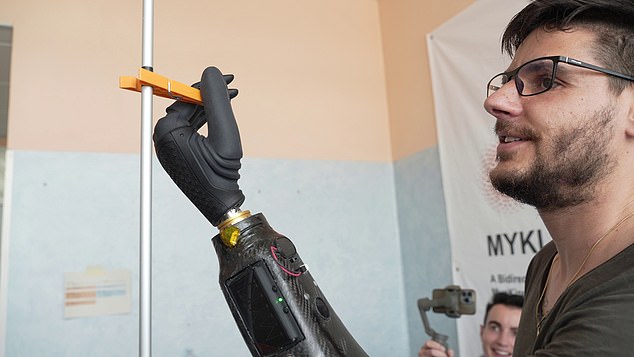A man who lost his left hand can now open jars, close a zipper and use a screwdriver with ease thanks to the world’s first magnetically controlled prosthetic hand.
The first bionic limb of its kind uses tiny magnets implanted in the forearm, which respond to the amputee’s brain signals, to allow him to precisely control the movements of a prosthetic limb.
An Italian research from the BioRobotics Institute has developed a robotic hand that converts the signals from six magnets implanted in the remaining arm to generate fine, dexterous movements.
The bionic hand was successfully tested by Daniel, 34, who used the prosthesis for six weeks and described it as “moving my own hand”.
It works by placing magnets just a few millimeters in size on the forearm muscles that once helped control the now-severed hand.
The first bionic hand of its kind uses only magnets and muscles to control movements. It was successfully tested on the first patient, a 34-year-old Italian named Daniel (pictured), who used the prosthesis for six weeks.
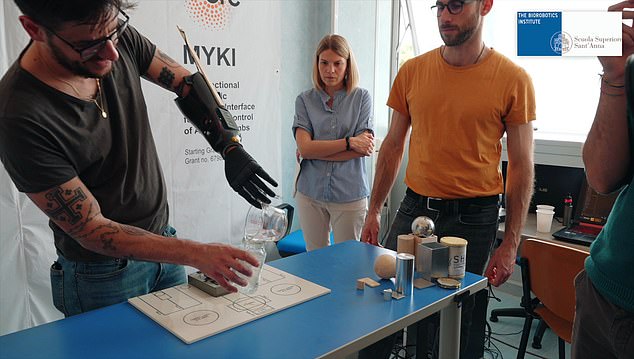
A research team from Pisa, Italy, at the BioRobotics Institute developed a robotic hand that can decode brain signals in motion using tiny magnets implanted in the muscles of the forearm.
By moving these muscles, an amputee like Daniel can send magnetic signals to a special computer program that translates them into precise movements of the robotic hand.
This allows him to perform fine movements similar to those of a flesh-and-blood equivalent.
“There are 20 muscles in the forearm and many of them control hand movements,” explains Professor Christian Cipriani, from the Institute of BioRobotics at the Scuola Superiore Sant’Anna.
‘Many people who have lost a hand still feel it as if it is still there and the residual muscles move in response to commands from the brain.’
Daniel, who lost his left hand in 2022, was selected as a volunteer for the study because he still felt the presence of his hand.
The residual muscles in his arm continued to respond to brain signals.
In April 2023, he underwent surgery to implant six magnets in his arm.
For each, the team of surgeons located and isolated the specific muscle they wanted the magnet to respond to and then mapped this pattern with the computer program.
The results of the experiment far exceeded the most optimistic expectations.
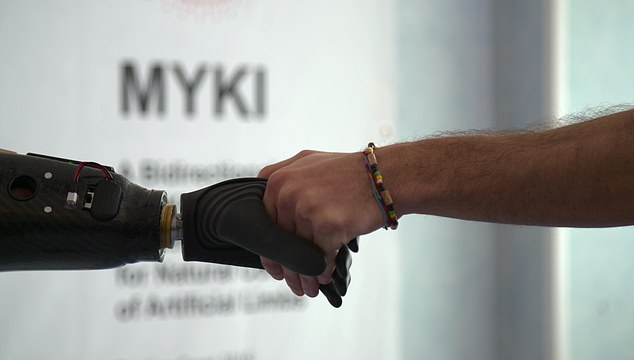
When the muscle contracts, the magnet moves and a special algorithm translates this change into a specific command for the robotic hand.
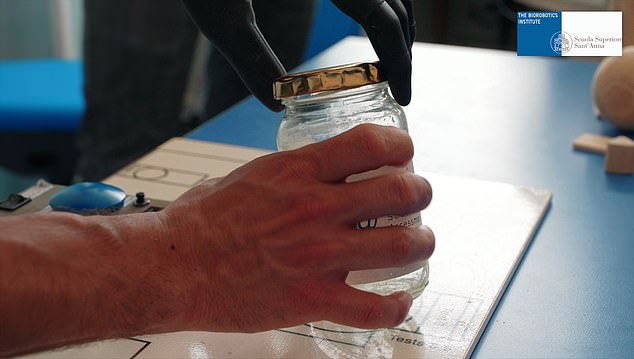
Daniel, who lost his left hand in 2022, was selected as a volunteer for the study because he still felt the presence of his hand and the residual muscles in his arm responded to signals from his brain.
Daniel was able to pick up and move objects of different shapes, perform everyday actions such as opening a jar, using a screwdriver, cutting with a knife and closing a zipper.
He could use his fingertips and control the force when he had to grasp fragile objects.
“This system allowed me to recover lost sensations and emotions: I feel as if I were moving my own hand,” said Daniel.
“This result is the fruit of decades of research. We have finally developed a functional prosthesis that meets the needs of a person who has lost a hand,” says Professor Cipriani.
The results of the trial were presented in the scientific journal Science Robotics and represent a significant advance for the future of prosthetics.
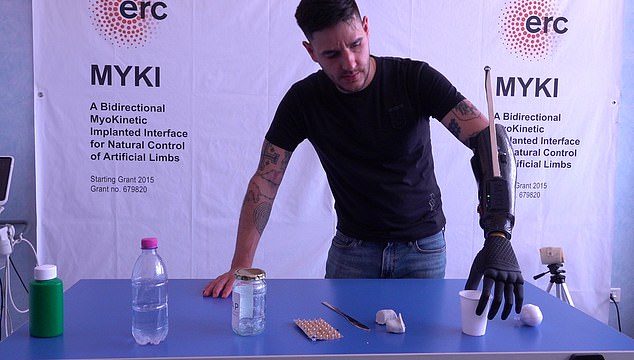
He was able to control the movements of his fingers, pick up and move objects of different shapes, perform classic everyday actions such as opening a jar, using a screwdriver and cutting with a knife.
The NHS does not currently fund the use of Daniel’s advanced bionic arm.
However, NHS England announced in November 2022 thatDozens of amputees could now have access to similar bionic arms that can mimic real hand movements.
Previously, prostheses provided by The NHS models were basic, with limited opening and closing movements. Others were cosmetic and had no practical function.
But newer bionic hands have made huge strides over these older models.
Last year, a team of engineers and surgeons from Sweden, Australia, Italy and the United States developed a “brain-powered” bionic arm.
It involved permanently inserting two titanium tips into the patient’s bone to create a connection point between the arm and the prosthesis.
This type of surgery, called osseointegration, is key to the new bionic technology, developed by Prensilia, an Italian prosthetics company that also made the bionic arm that uses magnets.
It replaces the need for a socket to secure an amputee’s limb to their prosthesis, which can be uncomfortable, ill-fitting, and difficult to put on and take off.
Electrodes were then implanted into the patient’s severed arm nerves and muscles and connected to the arm.
Thanks to this, the device is able to capture the signals emitted by the patient’s motor commands, the biological process that triggers the body’s movements.
Experts said the bionic arms, estimated to cost between £25,000 and £80,000, could be used by people as young as nine.
Eligible patients must have enough residual muscles in their upper arm to send signals that create intuitive movements.

